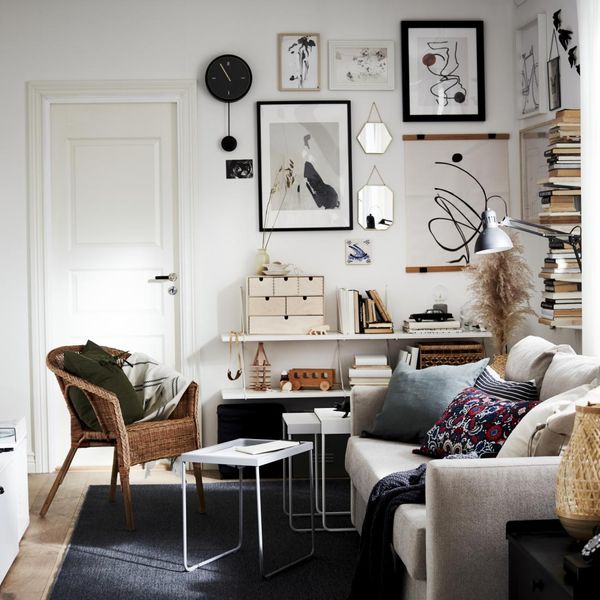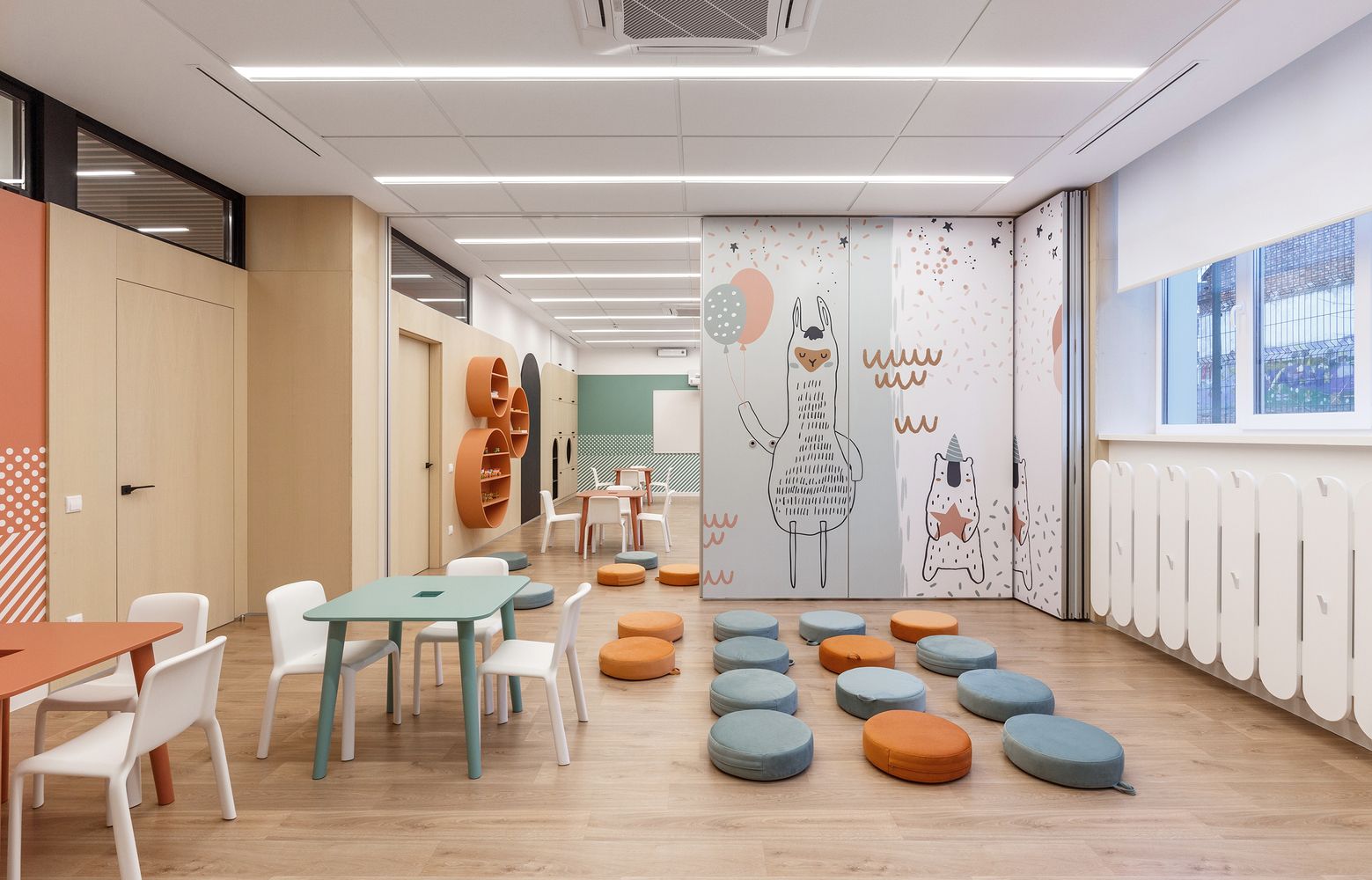The meeting of crooked lines and soft pastel hues in the interior of a children’s center: the designs of Ukrainian SVOYA studio creates a safe and playful environment for children with light, Scandinavian aesthetics.
Named Hello Baby, the children’s center is located on the first floor of a residential complex in the central part of the city of Dnipro. The task of the architects of SVOYA studio was to transform the spaces of the existing center. Similarly to the previous works of the studio, the new interior once again focuses on human interactions: they placed a great emphasis on forming the connections between spaces and ensuring comfortable access in the course of designing the space.
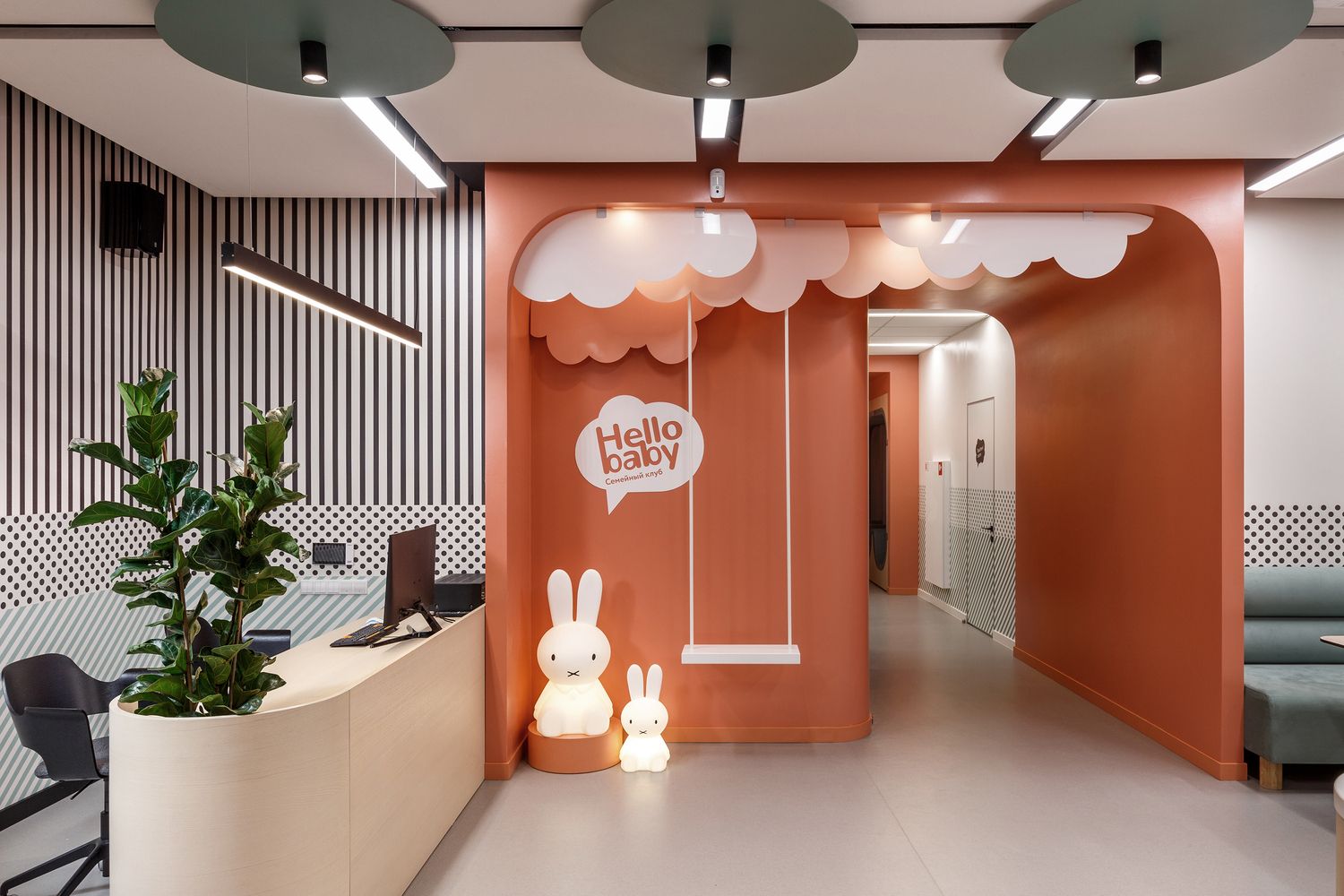
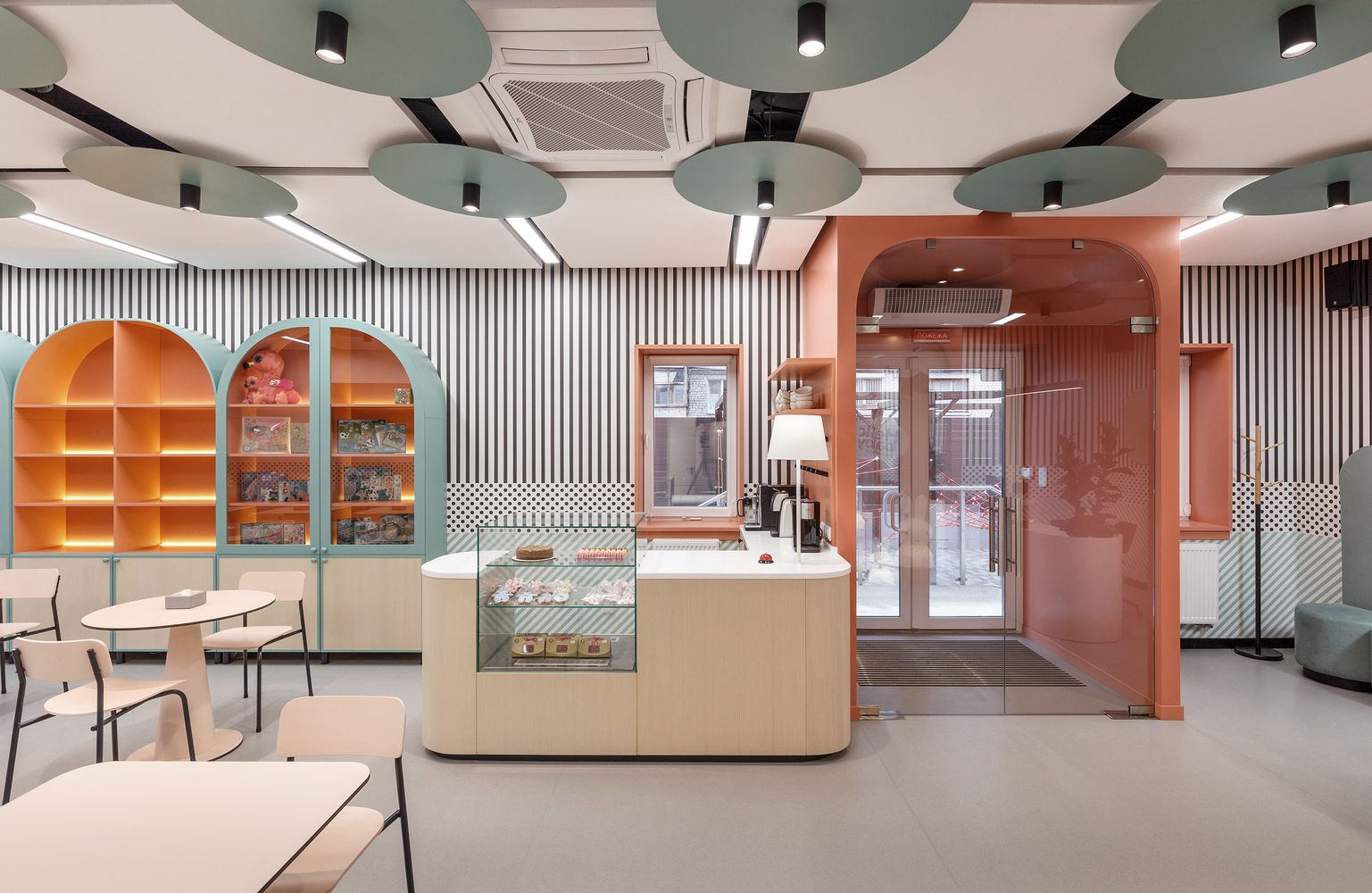

Located on 517 square meters, the children’s center fulfils the following functions: the entrance part combines a reception, a mini-coffee house and a store of themed products. From the reception, you can immediately get to the gym, outfitted with a locker room for adults and a shower, thus working for both children’s audience and for parents. The room fulfilling the functions of administration and office also opens from the entrance zone, as well as a corridor that runs through the entire center. For maximum utilization of the space, the architects placed various games and seats on the walls of the corridor.
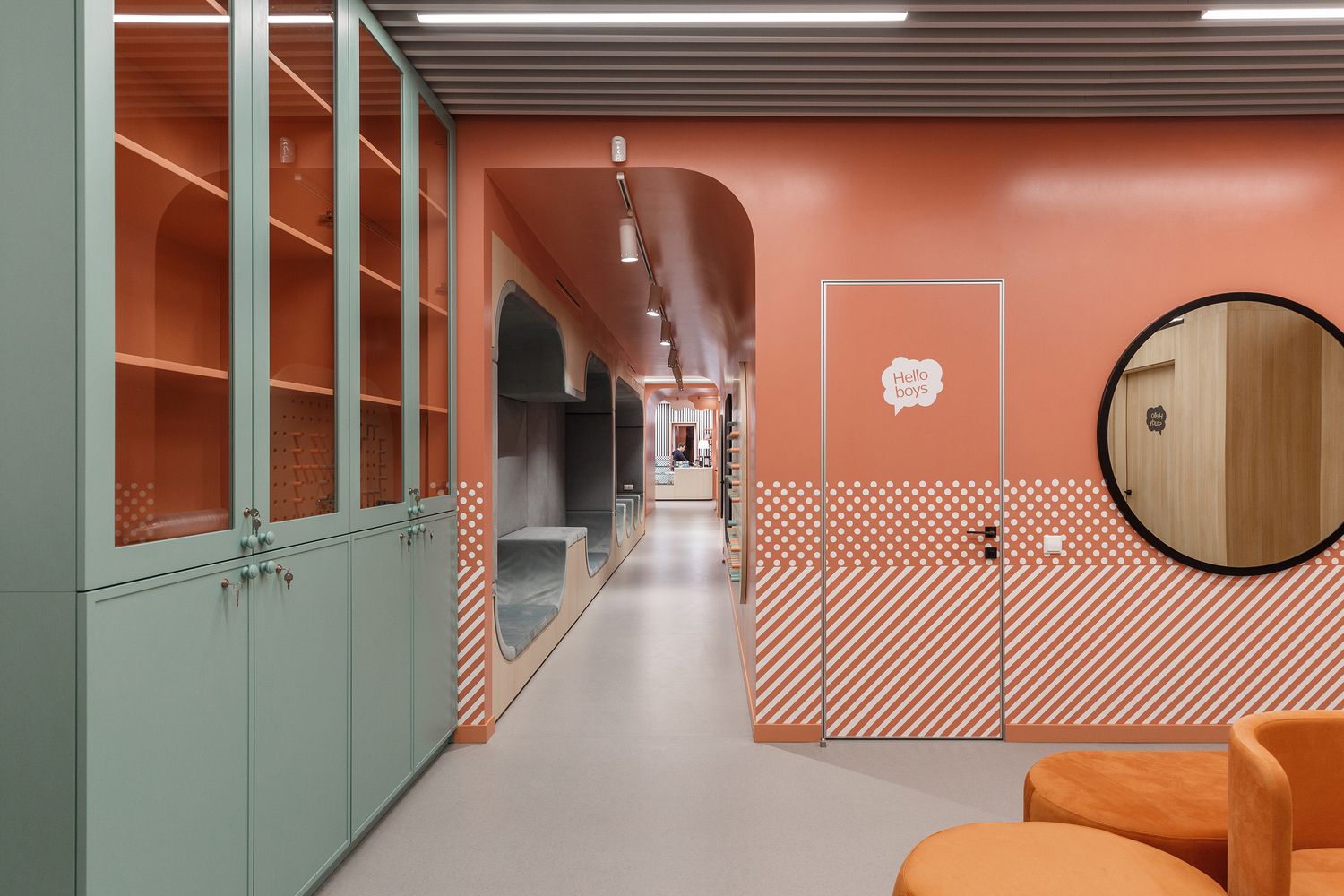
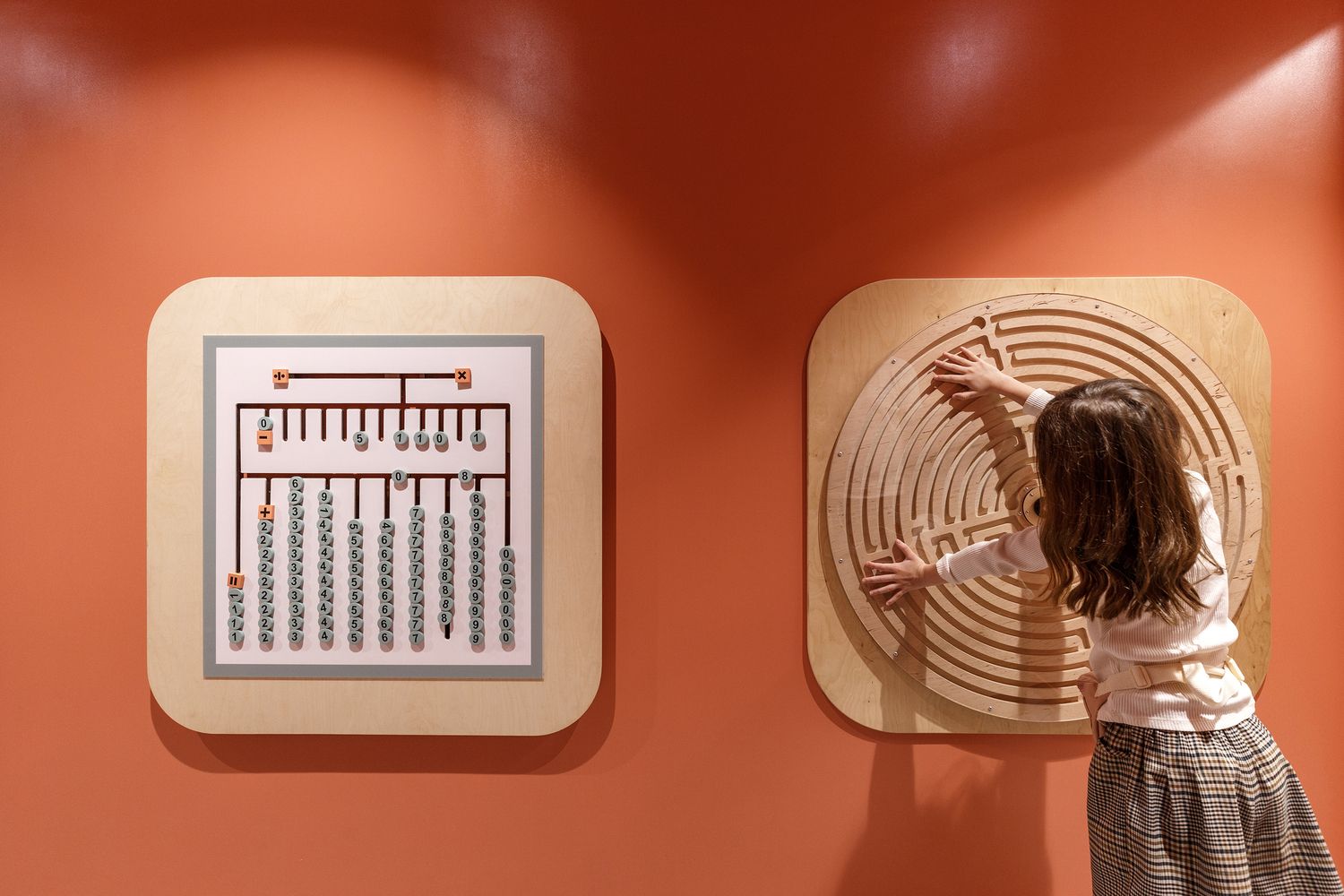
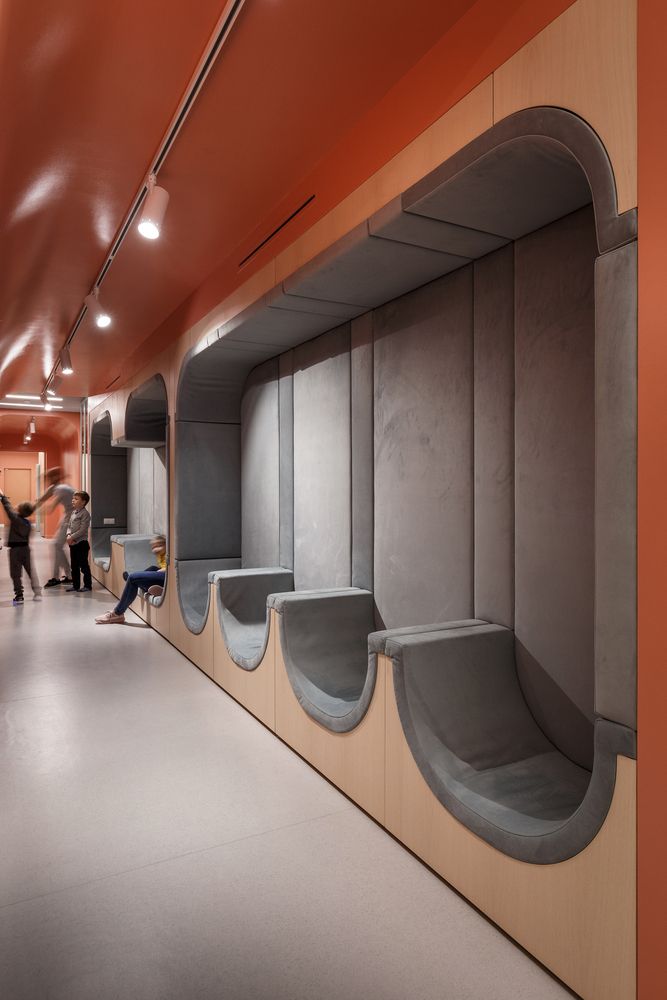
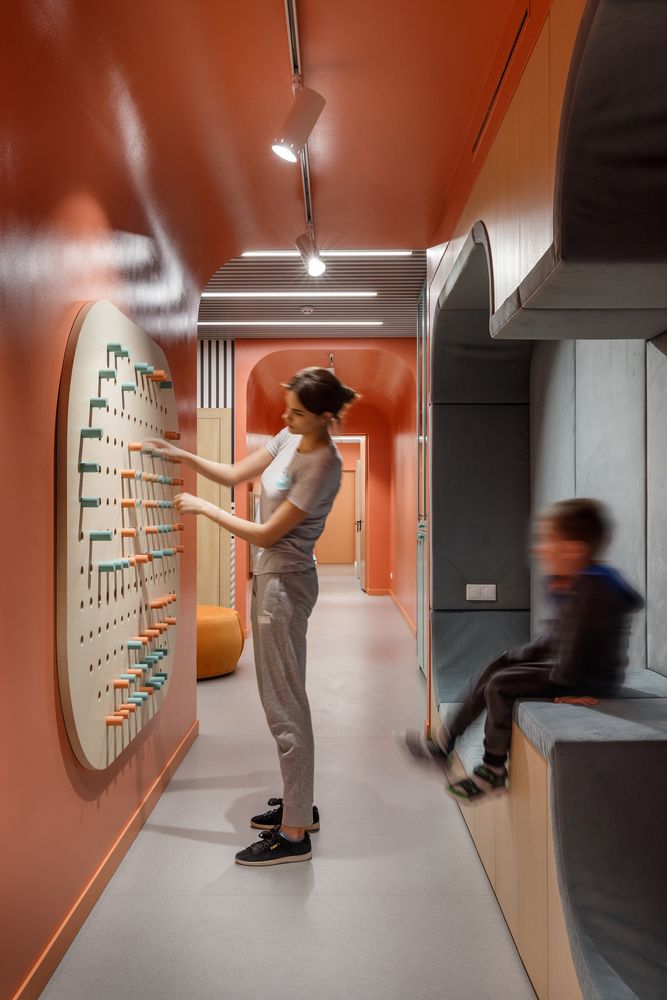
Hello BABY has three large classrooms, two of which can be combined, and the third is perfect for quiet hour, too. The center has additional 3 rooms for individual lessons, a music room and a room for creativity. An important element of the project is the multifunctionality of the rooms, allowing them to be transformed and adapted to the various activities and times of day: owing to the functional design, for example, the playrooms can be transformed into rooms with desks and seating areas within minutes.

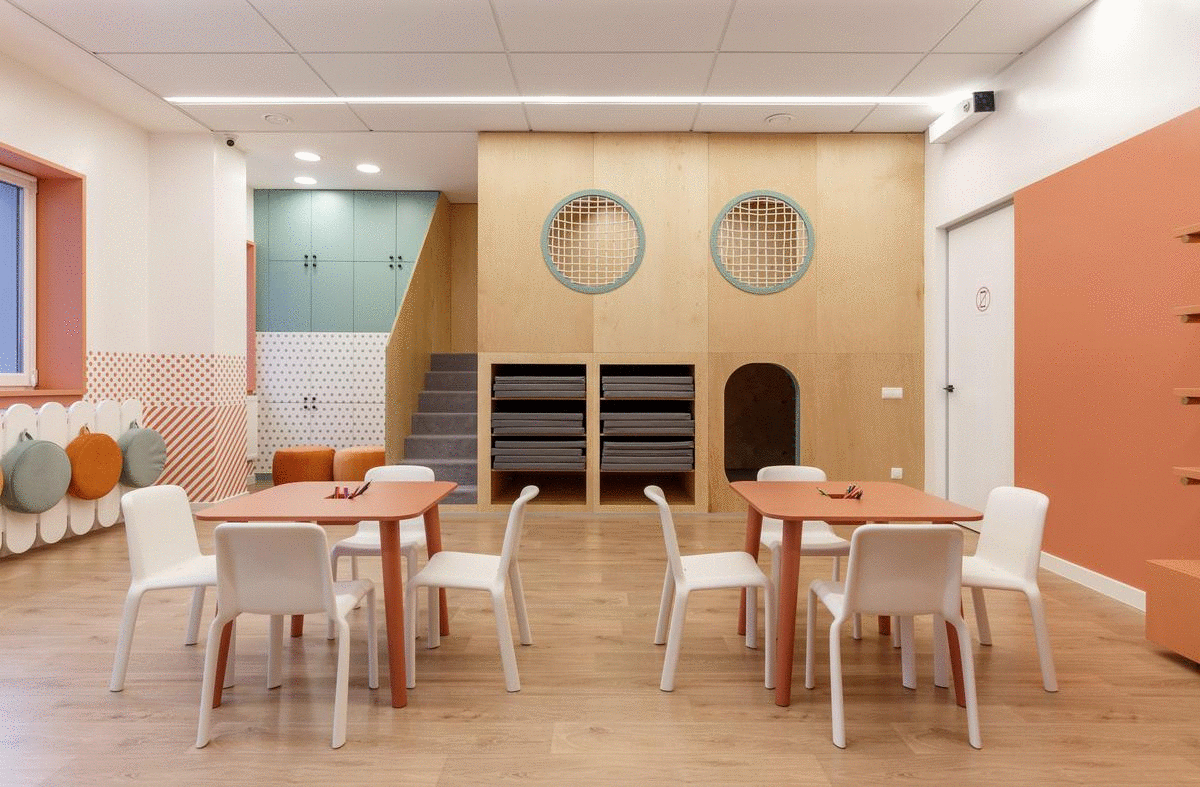
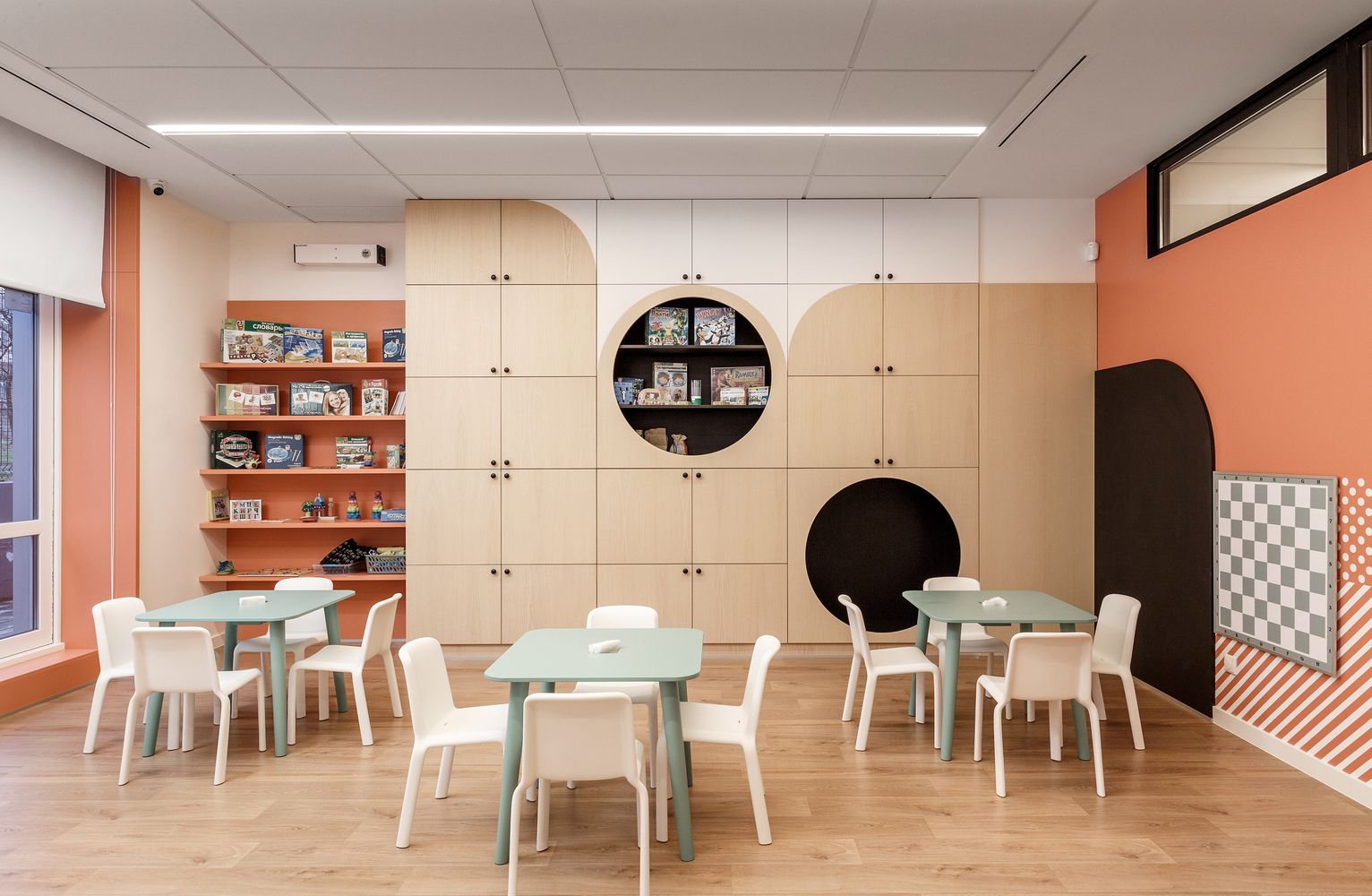
The kid-friendly and safe character of the space is further emphasized by the designers’ use of natural materials, and the fact that all furniture items, lamps, wall decorations and built-in games received a rounded, curved design.
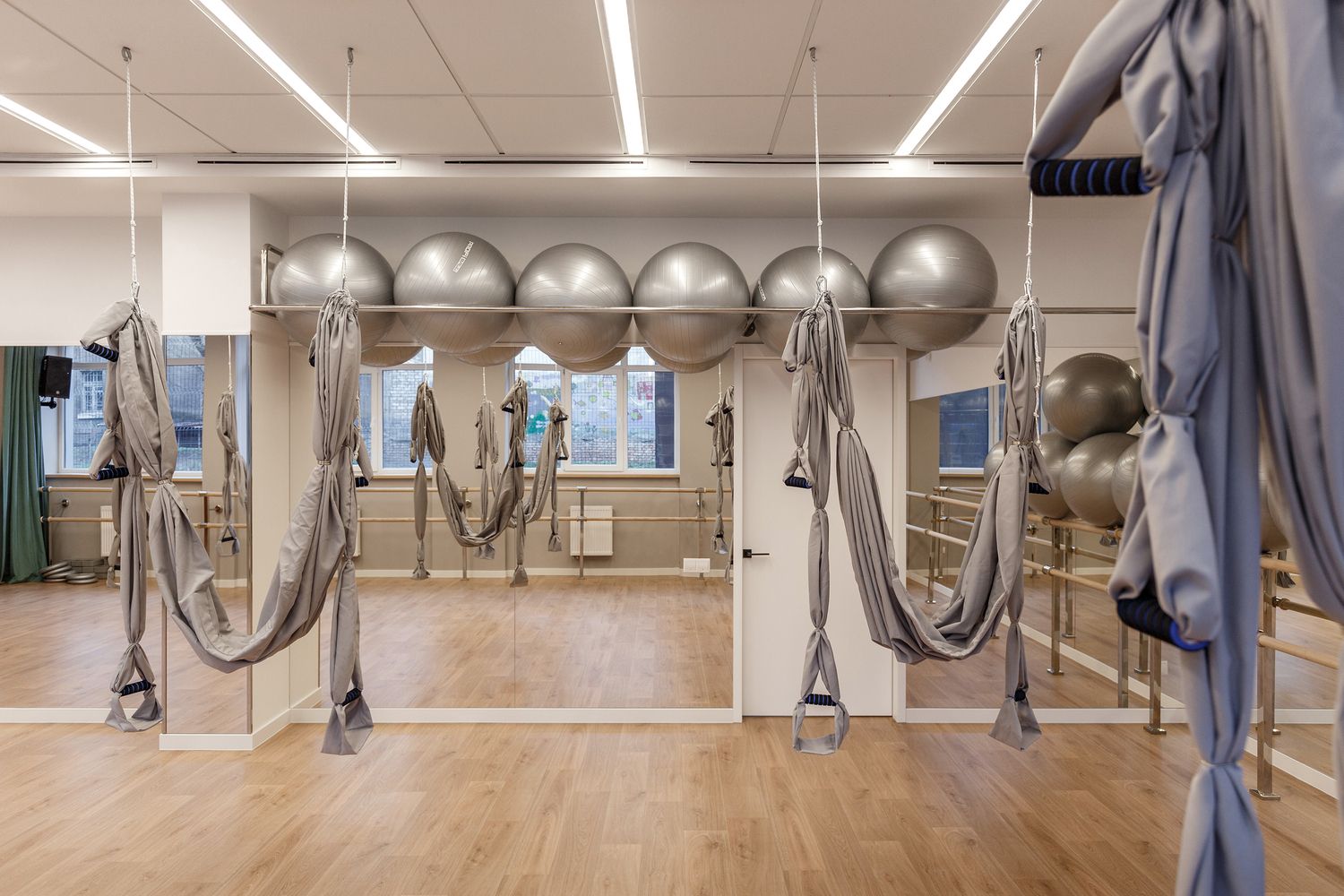
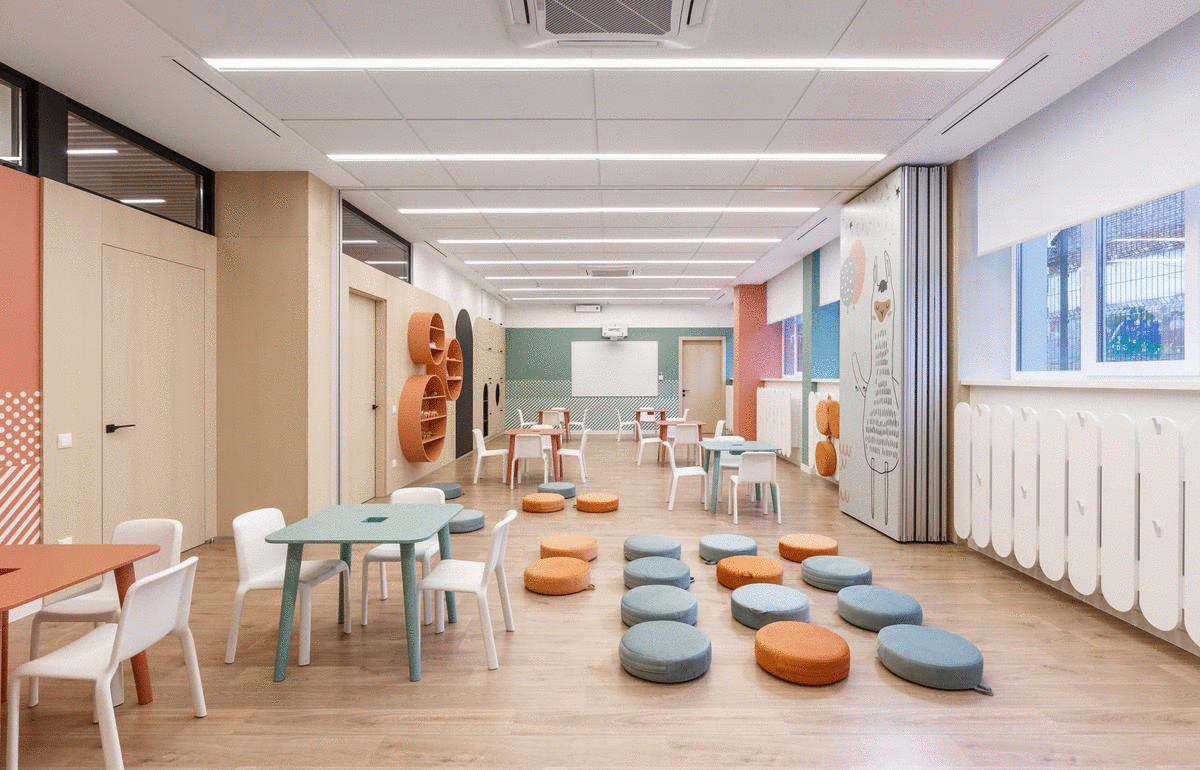

Source: ArchDaily

HIGHLIGHTS | Design, in jars
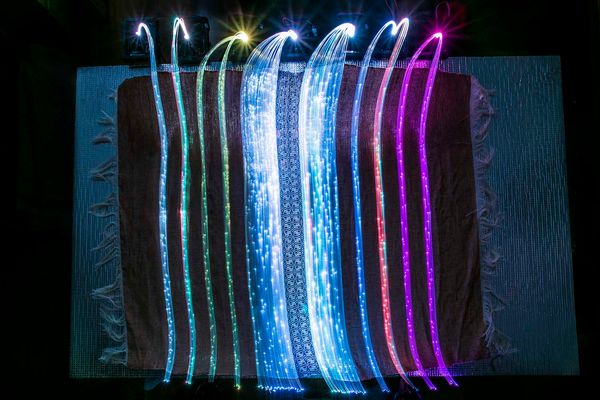
Textile of night lights woven with optical fibers | MetropoLight
